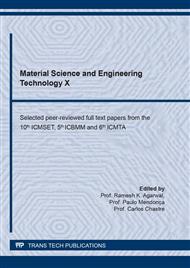p.309
p.315
p.323
p.331
p.338
p.345
p.352
p.358
p.367
A Study on the Salt Preventive Properties of Blast Furnace Slag with Different Blaine Values and Curing Condition
Abstract:
Since sustainable development is becoming incredibly influential, the concrete and cement industries are reducing negative environmental impacts. Previous studies have reported salt damage effects on reinforced concrete structures on various methods to prevent salt damage. The solution is to substitute the raw materials required in cement with industrial by-products from manufacturing steel products, including blast furnace slag (BFS). Since it strengthens the concrete structure, the chloride ion penetration must also be considered. Using BFS with various Blaine values investigated the effect of BFS on blocking resistance and chloride ion penetration. This study focused on delaying the permeation of chloride ions and conducted a study using blast furnace slag. The cement replacing with blast furnace slag improves the salt preventive performance and detoxifies chloride ions. This study examined fluctuations in the blast furnace slag Blaine value affect the salt preventive property by steam curing condition. The result confirmed that the compressive strength increases as the blast furnace slag with a higher Blaine value are used also confirmed that the study improved the salt preventive performance by increasing the addition rate of the blast furnace slag fine powder.
Info:
Periodical:
Pages:
338-344
Citation:
Online since:
February 2022
Authors:
Keywords:
Price:
Сopyright:
© 2022 Trans Tech Publications Ltd. All Rights Reserved
Share:
Citation:


